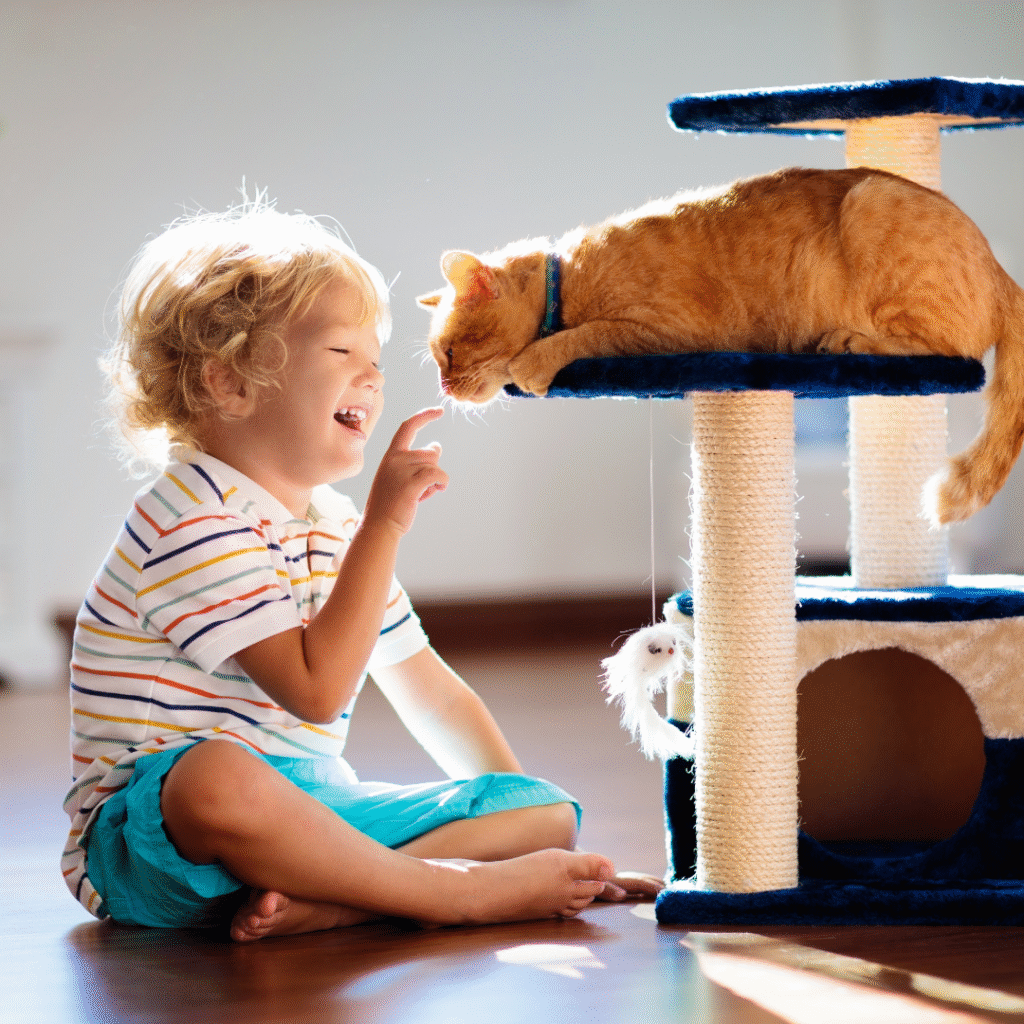When a beloved pet passes, it doesn’t just leave a hole in our homes — it leaves a silence that children feel in their hearts in a very real way. For many children, the passing of a pet is their very first experience with loss. They have questions, feelings, and fears that can be hard to name, and parents are often left wondering: What do I say? What do I not say?
Talking to children about pet loss is one of the most important conversations a family can have. It’s also one of the hardest. Yet, when handled with honesty and care, it becomes an opportunity to teach children about love, compassion, and the cycle of life in a way that is both grounding and healing.
This article will guide you through age-appropriate ways to talk with children about the death of a pet, why honesty matters more than “protecting” them from sadness, and how to support your family through the grieving process.
Why Honesty Matters
In moments of loss, our first instinct may be to soften the truth. We might say a pet “ran away” or “went to sleep” in the hope of sparing children pain. But children are incredibly perceptive; they know when something doesn’t add up. What’s more, vague or confusing explanations can cause unnecessary fear. A child told their pet “went to sleep” may suddenly become afraid of bedtime. A child told their pet “ran away” may wait at the door, hoping for a reunion that will never come.
Being honest doesn’t mean being harsh. It means using clear, age-appropriate language: “Our dog has passed. His body stopped working, and he won’t be coming back.” Children can handle the truth far better than we often think — as long as we deliver it with compassion.

Talking to Toddlers (Ages 2–4)
Toddlers don’t yet understand permanence. To them, loss can feel like simple absence — someone or something is gone, but they don’t fully grasp that it’s forever. Their questions might be very direct, and their grief may show up as changes in behaviour: clinginess, tantrums, or disrupted sleep.
For toddlers, keep explanations short and simple:
• “Max has passed on. That means we won’t see him anymore, and that makes us sad.”
• “We loved him very much, and it’s okay to miss him.”
At this age, consistency matters more than explanation. Provide comfort through routine, gentle reassurance, and physical closeness. Give them a stuffed animal or blanket as a comfort object if they seek security. They may ask the same question many times — answer with patience, even if it feels repetitive. Repetition is their way of processing.
Talking to Young Children (Ages 5–8)
This age group begins to understand the concept of death as final, but they may still hold magical thinking. They might wonder if their pet could come back, or whether something they did or thought caused the death.
Here, clarity is essential:
• “Bella passed because her body stopped working. Nothing you did or thought made that happen.”
• “When a body stops working, it can’t eat, breathe, or move anymore.”
Children this age may also want details about what happened. Answer what you can in plain, factual language. Avoid euphemisms like “put to sleep,” which can be confusing and frightening.
Encourage expression. Offer drawing, writing, or storytelling as ways to process feelings. Rituals can help too — lighting a candle, planting a flower, or creating a photo album together can make the grief tangible and give children a safe outlet for their love.
Talking to Preteens (Ages 9–12)
Preteens have a more adult-like understanding of death but may struggle to express their emotions. They may swing between deep sadness and a need for distraction, sometimes even appearing detached. Don’t mistake detachment for lack of caring — it’s often their way of coping.
With this age group, openness goes a long way:
• Invite them into conversations about grief. Ask how they’re feeling, even if they seem reluctant to share.
• Allow them to ask questions about medical decisions, euthanasia, or the natural aging process. They may want to understand the why behind what happened.
This is also the age where children may grapple with bigger existential questions — life, fairness, and mortality. It’s okay not to have all the answers. What matters most is that they feel seen and heard. Saying “I don’t know, but I feel sad too” models honesty and connection.
Talking to Teenagers (Ages 13–18)
Teenagers often straddle two worlds: the child within them and the adult they are becoming. Their grief can be complicated, sometimes expressed in moodiness, withdrawal, or even anger. They may minimize their feelings on the outside while experiencing deep emotions on the inside.
With teens, respect is key:
• Acknowledge their grief as valid and personal.
• Allow them space to process independently but remain available if they want to talk.
• Encourage them to express themselves in ways that feel natural — through journaling, music, sports, or spending time with friends.
Be careful not to dismiss their feelings or compare their grief to that of younger siblings. Their bond with the pet is unique and deserves to be honored.

Supporting Children of All Ages
No matter your child’s age, a few guiding principles can help:
- Model Grief Yourself
Children look to adults to understand how to respond. It’s okay to let them see you cry, to admit you’re sad, and to talk about your own feelings. This shows them that grief is natural and that they’re not alone. - Create Rituals Together
Hold a small family ceremony, make a memory box, or write letters to your pet. Rituals give children a sense of closure and help them channel their love into something meaningful. - Encourage Ongoing Conversations
Grief doesn’t resolve after one talk. Check in days, weeks, and even months later. A simple “How are you feeling about Daisy today?” opens the door for ongoing dialogue. - Normalize a Range of Emotions
Children may feel sadness, guilt, anger, or even relief — especially if a pet was very ill. All of these emotions are normal. Remind them: whatever you feel is okay.
What to Avoid Saying
It can be tempting to lean on clichés in an effort to soothe, but some phrases can confuse or hurt more than they help:
• “Your pet went away.” (Leaves children expecting a return.)
• “God needed another angel.” (May cause children to feel abandoned or fearful of divine intervention.)
• “Don’t cry.” (Invalidates their grief.)
Instead, keep language clear, compassionate, and validating: “I know you’re sad. I am too. We loved her very much.”
Helping Children Carry the Love Forward
The loss of a pet is not just an ending — it’s also a continuation of love in a new form. Encourage children to remember their pet with joy as well as sorrow. Share funny stories, recall special habits, and celebrate the bond that made their relationship so meaningful.
This reframing helps children understand that grief and love are not opposites but companions. It teaches them that it’s possible to keep living fully while carrying cherished memories forward.
Closing Thoughts
When a pet passes, it changes the rhythm of a family. For children, that change can feel confusing and overwhelming. But with honesty, patience, and compassion, parents can turn this painful experience into one that nurtures resilience and empathy.
By speaking openly, creating rituals, and validating emotions, we give our children not just comfort in their grief but also the tools to navigate loss throughout their lives. And in doing so, we honor our pets in the most meaningful way possible — by letting the love they gave us continue to guide the way we show up for one another.

Koryn Greenspan is a professional Certified Pet Loss Bereavement Specialist, Professional Dog and Puppy Trainer and a passionate advocate for pet wellness and holistic pet care.
As the founder of The Parted Paw, one of the first pet loss bereavement support services in the country, she is committed to raising awareness about pet loss as well disenfranchised grief and helping workplaces foster empathy and understanding for grieving employees who are anticipating or currently grieving the loss of a beloved pet.
More information about The Parted Paw and Koryn can be seen at www.thepartedpaw.com or on LinkedIn at www.linkedin.com/in/koryn Email: koryn@thepartedpaw.com

Read more articles by Koryn:
Disenfranchised Grief: Have You Experienced It?
Managing Anticipatory Grief & Embracing the Unseen
Learning About Pet Loss and Ways to Cope
Why Pet Loss and Guilt Are Two Peas in a Pod
Setting a New Standard for Pet Loss Support at Work
More Than Goodbye: Why Pet Memorials Matter
The Evolving Landscape of Pets, Pet Care & Pet Loss
The Importance of Building a Culture of Care Around Pet Loss







